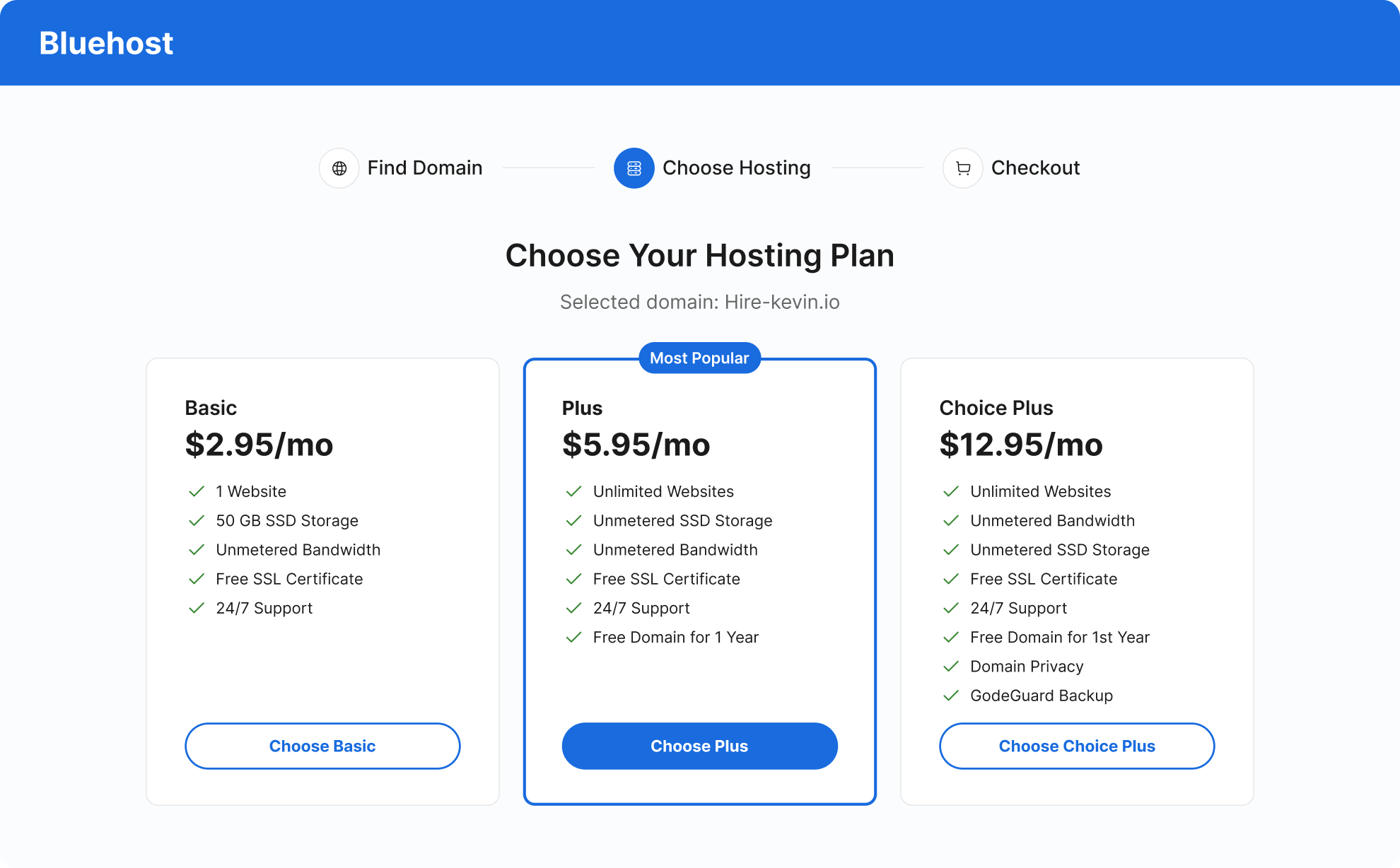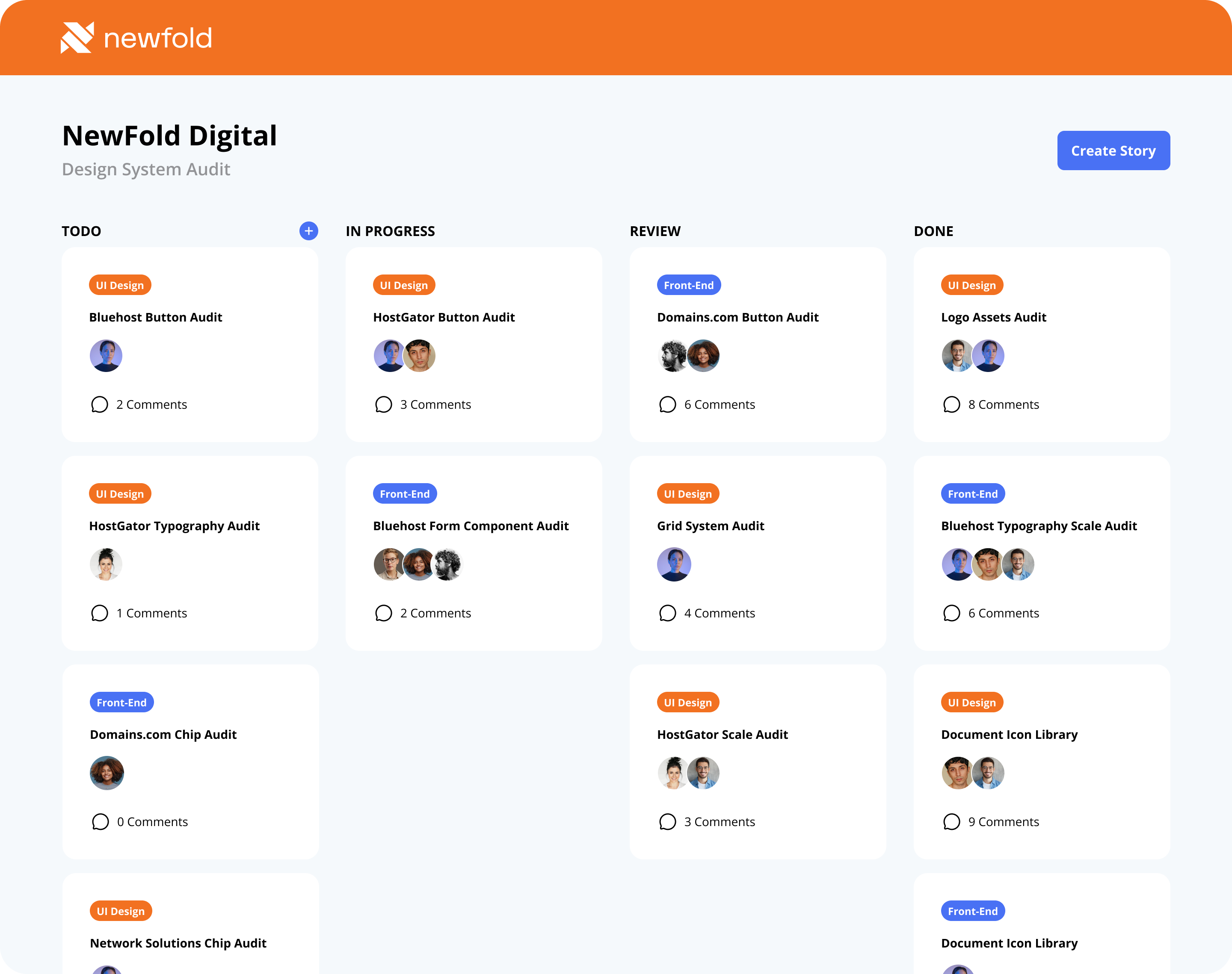Design Once, Brand Everywhere
Architecting a multi‑brand design system at Newfold Digital to unify foundations, preserve brand identity, and accelerate delivery across a complex portfolio.
12+
Brands Unified
32%
Faster Deployment
3x
Design Efficiency

PROBLEM & CONTEXT
Dozens of Brands, Dozens of Design Languages
Newfold Digital is the parent company behind a large portfolio of web service brands —Bluehost, HostGator, Network Solutions, Web.com, Domain.com, Yoast SEO, and many others. This collection of brands exists because of years of mergers and acquisitions. Instead of building one brand from the ground up, Newfold grew by bringing multiple established players together under one umbrella. While this strategy created market reach and brand recognition across different customer segments, it also introduced significant design and technical complexity.
Each brand operated independently for years, developing its own design language, its own component library, and its own customer experience. This autonomy helped brands retain their unique identity but created systemic problems at scale.
Inconsistent experiences
Customers moving between brands encountered fragmented patterns.
Heavy duplication of effort
Teams solved the same problems repeatedly in silos.
Slow, costly change
Refreshes and improvements multiplied across codebases.
DISCOVERY
Auditing the Chaos
Before designing solutions, we conducted a full audit across every brand’s design system, component library, and customer experience. What we found was staggering: dozens of variations of buttons, inputs, and navigation patterns that solved the same problems in slightly different ways.
Color palettes overlapped but weren’t consistent. Typography scales drifted across products. Even foundational tokens like spacing and radius varied wildly. Every brand had reinvented the wheel in its own way.
This discovery phase gave us both clarity and urgency. The inconsistency wasn’t just aesthetic — it slowed delivery, created accessibility risks, and fragmented the customer experience. The audit became the baseline for unifying foundations without erasing brand identity.

RESEARCH
Grounding Insights in Evidence
Alongside the audit, we conducted research to understand the human side of the problem. We interviewed designers, engineers, and product managers across the portfolio to hear firsthand where friction slowed them down and where fragmentation hurt customers.
Customer feedback and support tickets revealed confusion when moving between brands: navigation worked differently, checkout flows shifted, and accessibility gaps created frustration. Internally, teams expressed how much time was wasted reinventing solutions that already existed elsewhere.
We also benchmarked against other multi‑brand design systems in the industry, validating that a token‑first approach with semantic theming was the right direction. These research insights ensured our system wasn’t just technically elegant — it was rooted in the realities of how people built and used products every day.
Fragmented patterns
Customers struggled moving between brands as menus, flows, and interactions varied.
Accessibility & usability gaps
Inconsistent tokens and patterns created barriers for customers and slowed teams.
Reinvented solutions wasting time
Designers and engineers repeatedly rebuilt components instead of reusing them.
GOALS & APPROACH
Design Once, Brand Many
Our objective was to unify without uniformity. The strategy: build common foundations while enabling brands to express themselves semantically.
We took a token‑first approach. Global primitives like spacing, sizing, and layout grid stayed consistent across all brands to maintain structural stability. Brand‑specific primitives — such as colors, typography families, and border radius — were mapped into semantic tokens. These tokens, like brand-primary-main or btn-primary-bg , gave values brand meaning. Components never touched raw values.
The result was a single component library that remained brand‑agnostic in code but became brand‑aware at runtime. Teams could migrate gradually, starting with high‑leverage components and layering in the rest — bridging the gap between vision and reality: one system, many voices.

EXECUTION & DESIGN
Bringing the System to Life
With the foundations in place, we shifted focus to execution. We prioritized high-impact components first — buttons, inputs, navigation — the building blocks that appear across every brand experience.
Each component was designed to be brand-agnostic at its core, styled exclusively through semantic tokens. This approach meant a single codebase could generate multiple brand expressions without duplication.
We documented clear usage guidelines and paired every component with accessibility best practices. This ensured consistency not just in look and feel, but in how teams implemented them across the portfolio.